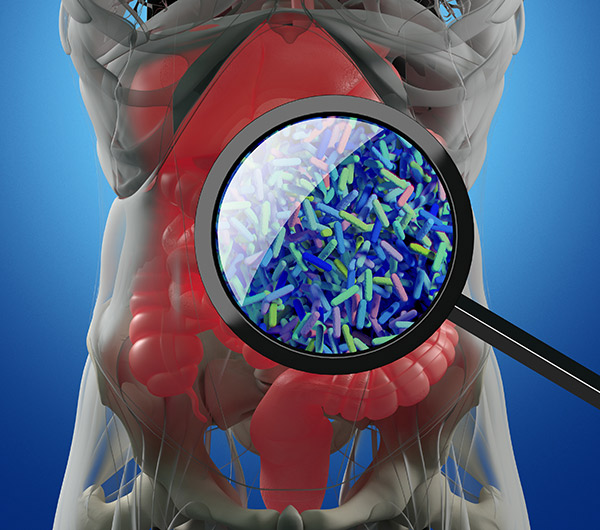
Source: ChrisChrisW/Getty Images
If you listen closely to gut bacteria and host cells, you learn that they speak the same language. You might then pick up the language yourself, giving you the ability to join the microbiome–host conversation, which is known to have implications for human health. And if you ever had trouble being heard, you could try putting words in the mouths of all those jabbering bacteria, steering the microbiome–host conversation toward healthy conclusions.
When bacteria and host cells “talk,” they do so via signaling molecules, such as the ligands that interact with membrane-bound G-protein-coupled receptors (GPCRs). To keep an ear out for such ligands, scientists based at Rockefeller University and the Icahn School of Medicine at Mt. Sinai used the tools of bioinformatics and synthetic biology. These scientists, led by Sean Brady, Ph.D., director of Rockefeller University's Laboratory of Genetically Encoded Small Molecules, were particularly attuned to N-acyl amides, which interact with GPCR receptors.
Dr. Brady and colleagues, including co-investigator Louis Cohen, Ph.D., found that gut bacteria and human cells may not speak in the same dialect, but they can understand each other. Building on this observation, the scientists developed a method to genetically engineer the bacteria to produce molecules that have the potential to treat certain disorders by altering human metabolism. In a test of their system on mice, the introduction of modified gut bacteria led to reduced blood glucose levels and other metabolic changes in the animals.
Details of this work appeared August 30 in the journal Nature, in an article entitled “Commensal Bacteria Make GPCR Ligands That Mimic Human Signalling Molecules.” The article describes newly discovered commonalities in bacteria and host signaling, and it explains how these commonalities suggest ways gut flora could be engineered to have therapeutically beneficial effects on disease.
“We found that N-acyl amide synthase genes are enriched in gastrointestinal bacteria and the lipids that they encode interact with GPCRs that regulate gastrointestinal tract physiology,” wrote the article’s authors. “Mouse and cell-based models demonstrate that commensal GPR119 agonists regulate metabolic hormones and glucose homeostasis as efficiently as human ligands, although future studies are needed to define their potential physiological role in humans.”
The language shared by bacteria and host cells involves the lock-and-key relationship of ligands, which bind to receptors on the membranes of human cells to produce specific biological effects. In this case, the bacteria-derived molecules are mimicking human ligands that bind to GPCRs. Many of the GPCRs are implicated in metabolic diseases, Dr. Brady noted, and are the most common targets of drug therapy. And they're conveniently present in the gastrointestinal tract, where the gut bacteria are also found.
“If you're going to talk to bacteria,” explained Dr. Brady, “you're going to talk to them right there.” (Gut bacteria are part of the microbiome, the larger community of microbes that exist in and on the human body.)
In its work, the team led by Drs. Cohen and Brady engineered gut bacteria to produce N-acyl amides that bind with a specific human receptor, GPR 119, which is known to be involved in the regulation of glucose and appetite and has previously been a therapeutic target for the treatment of diabetes and obesity. The bacterial ligands they created turned out to be almost identical structurally to the human ligands, said Dr. Cohen, an assistant professor of gastroenterology in the Icahn School of Medicine at Mt. Sinai.
Among the advantages of working with bacteria, continued Dr. Cohen, who spent five years in Dr. Brady's lab as part of Rockefeller's Clinical Scholars Program, is that their genes are easier to manipulate than human genes and much is already known about them. “All the genes for all the bacteria inside of us have been sequenced at some point,” he pointed out.
Although the ligands are the product of nonhuman microorganisms, Dr. Brady says it's a mistake to think of the bacterial ligands they create in the lab as foreign. “The biggest change in thought in this field over the last 20 years is that our relationship with these bacteria isn't antagonistic,” he commented. “They are a part of our physiology. What we're doing is tapping into the native system and manipulating it to our advantage.”
“This is a first step in what we hope is a larger-scale, functional interrogation of what the molecules derived from microbes can do,” Dr. Brady said. His plan is to systematically expand and define the chemistry that is being used by the bacteria in our guts to interact with us.


